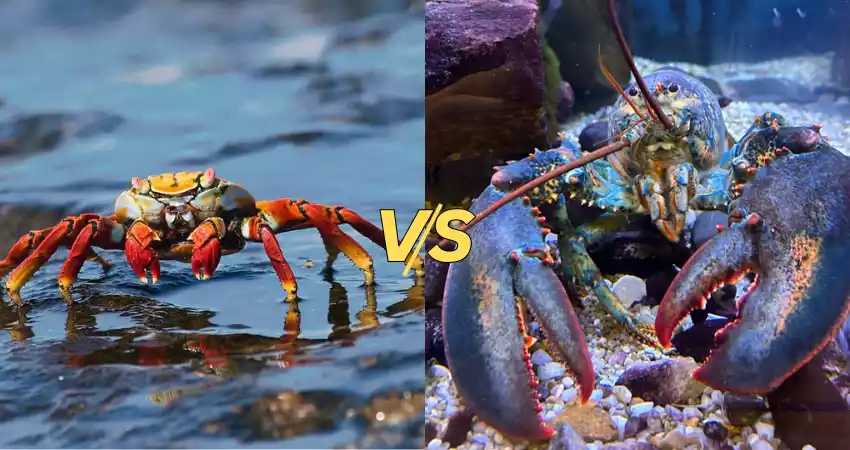The lobster and the crab are two delicious crustaceans that are featured on menus for seafood across the globe. While they both have a culinary value they differ in many aspects of their structure and habitat to their culinary applications and their cultural significance. In this study, we’ll explore the major distinctions between lobsters and crabs to shed light on these two popular delicacies.
What is Crab?
A crab is a type of crustacean belonging to the order Brachyura. These marine or freshwater arthropods are characterized by their distinct body shape, which typically includes a broad, flattened body, a hard exoskeleton, and a pair of large pincer-like claws.
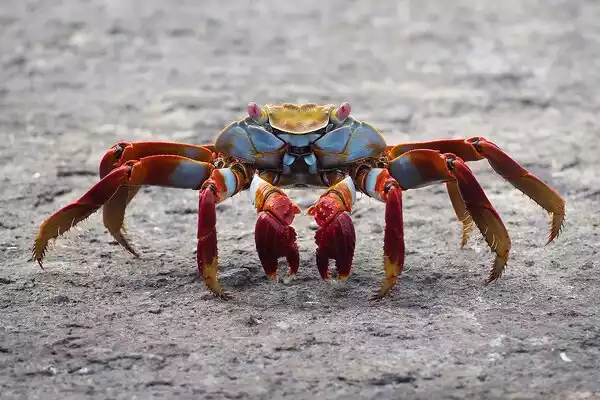
Crabs are widely distributed in oceans, seas, rivers, and lakes around the world, and they come in a variety of species, sizes, and colors. They are known for their sideways walking motion and are often prized as seafood due to the flavorful meat found in their claws and body. Crabs play important ecological roles in aquatic ecosystems and are a significant part of many culinary traditions worldwide.
What is Lobster?
A lobster is a type of marine crustacean belonging to the family Nephropidae or Homaridae. Lobsters are characterized by their elongated bodies, hard exoskeletons, and large, powerful claws. They are primarily found in cold-water oceans and seas around the world, inhabiting rocky crevices or burrowing in sandy or muddy substrates on the ocean floor. Lobsters come in various species, and their coloration can range from greenish-brown to brilliant shades of red, blue, and orange.
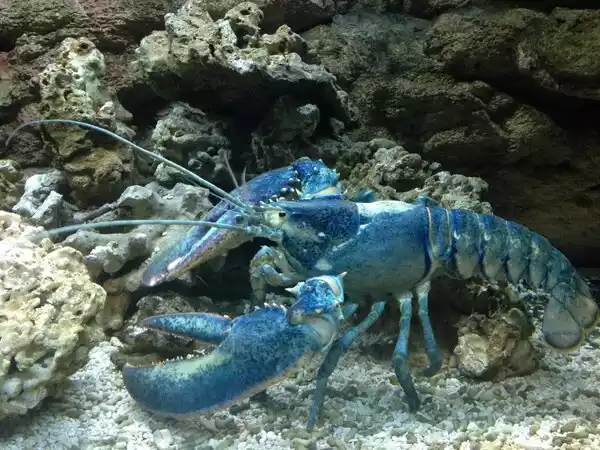
Lobsters are highly valued in the culinary world for their sweet and tender meat, particularly in dishes like lobster bisque, lobster rolls, and lobster thermidor. They are often considered a delicacy and are associated with fine dining. Lobster fishing is an important industry in regions where lobsters are abundant, and regulations are in place to manage and conserve lobster populations to ensure their sustainability.
Comparison chart of Crab and Lobster
Here’s a structured comparison:
| Attribute | Crab | Lobster |
|---|---|---|
| Physical Appearance | Typically round or oval body with a short, symmetrical abdomen tucked under the thorax; varied sizes. | Long bodies with a muscular tail; large claws (chelae); and asymmetrical abdomen. |
| Size | Generally smaller; varies greatly among species. | Usually larger; some species can grow quite big. |
| Habitat | Found in all the world’s oceans, in freshwater, and on land. | Mostly live in the ocean, with a few freshwater and terrestrial species. |
| Mobility | Walks sideways due to the structure of their legs. | Typically walk forwards or backward; some can also swim sideways. |
| Lifespan | Varies by species; some live a few years while others can live up to 30 years. | Can live up to 50 years or more, depending on the species. |
| Diet | Omnivores; eat algae, mollusks, fungi, bacteria, other crustaceans, worms, and dead organic matter. | Primarily carnivorous; feed on fish, mollusks, other crustaceans, worms, and some plant material. |
| Shell | Hard exoskeleton; undergo molting as they grow. | Hard exoskeleton; also undergoes molting. |
| Economic Value | Commercially important in global seafood markets; various species are harvested. | High economic value; considered a delicacy in many cultures. |
| Conservation Status | Varies by species; some are abundant, others at risk. | Some species are at risk due to overfishing and habitat loss. |
| Culinary Uses | Widely used in cuisines worldwide; different species offer different flavors and textures. | Highly prized in the culinary world; known for tender, sweet meat, especially in claws and tail. |
Physical Characteristics
Physical Characteristics of Crab and Lobster:
Crab:
- Typically round or oval with a short, symmetrical abdomen tucked under the thorax.
- Varies significantly among species, generally smaller.
- Two claws, often one larger than the other.
- Ten legs including the claws, adapted for walking sideways.
- The hard exoskeleton varies in color.
Lobster:
- Long bodies with a muscular tail and an asymmetrical abdomen.
- Usually larger, some species can grow quite big.
- Two large claws (chelae), often different sizes with distinct functions.
- Ten legs including the claws, are designed for more forward or backward movement.
- The hard exoskeleton typically has darker colors like blues, greens, and browns.
Culinary Uses: Crab vs Lobster
Crabs and lobsters are highly prized in culinary traditions around the world for their unique flavors and textures. Crab meat is celebrated for its soft, sweet, and delicate taste and is used in a variety of dishes, from crab cakes and crab bisques to traditional seafood boils and sushi. The different species of crab offer a range of flavors and textures, catering to diverse culinary preferences.
Lobsters, on the other hand, are renowned for their rich, tender, and slightly sweet meat, particularly found in their claws and tails. Lobster is often considered a luxury seafood, featured in upscale dishes like lobster thermidor, lobster bisque, and classic boiled or grilled lobster, often served with butter.
Both crab and lobster are versatile in the kitchen, adaptable to a wide array of cooking methods and flavors, making them favorites among seafood lovers and gourmet chefs alike.
Crab vs Lobster: Culinary Differences
The differences in the culinary experience between lobsters and crabs are distinctive and contribute to the diversity of seafood-based cuisine. Crab meat is well-known for its soft, supple texture and delicate sweet flavor. It is perfect for food items where its subtle flavor can shine through, such as seafood salads, crab cakes as well and light pasta.
Each species of crab has distinct flavors and adds to the variety of food. Lobsters are renowned for their more firm and succulent meat that has the most delicious, sweet flavor. The most sought-after parts are the claws and the tail which are often the main attraction in extravagant dishes like lobster bisque and lobster roll and boiled or grilled lobster recipes.
While crabs are often combined with other ingredients to enhance the taste, lobster is often the main ingredient in a dish and is often served with simple ingredients like lemon or butter to emphasize the natural flavor. The different flavors and textures create a distinct taste for lobsters and crabs and are popular seafood choices in various culinary settings.
Popular Recipes: Crab vs Lobster
Popular Recipes for Crab and Lobster:
Crab:
- Crab Cakes: A mixture of crab meat, breadcrumbs, and seasonings, pan-fried or baked.
- Crab Bisque: A creamy, smooth soup made with crab meat, cream, and a blend of spices.
- Steamed Crabs: Whole crabs are steamed with spices, often eaten with melted butter.
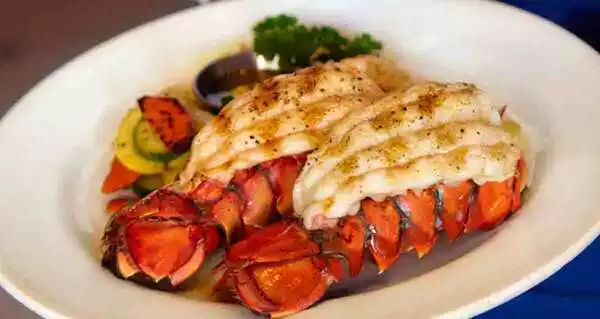
Lobster:
- Lobster Rolls: Chunks of lobster meat served in a buttered, toasted roll, often with mayonnaise or lemon juice.
- Grilled Lobster: Lobster tails are grilled and often served with butter or a lemon-herb sauce.
- Lobster Thermidor: A rich dish made with cooked lobster meat, egg yolks, and brandy or cognac, then baked in its shell.
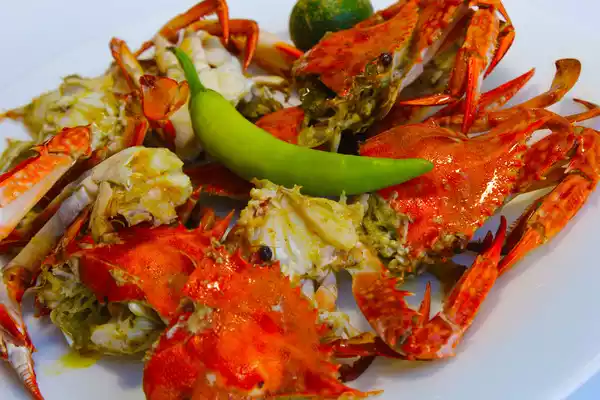
Price: Crab vs Lobster
The price of crab and lobster can vary significantly based on several factors such as species, size, location, and season.
- Crab: The price of crab depends on the type and size. For example, varieties like Blue Crab or Dungeness Crab are generally more affordable than King Crab, which is known for its large size and rich flavor. Regional availability also plays a role; crabs are typically cheaper where they are locally caught.
- Lobster: Lobster is often seen as a luxury seafood and is usually more expensive than crab. The price can vary depending on the type of lobster, with Maine lobsters often commanding a higher price. Factors like size and whether the lobster is live or pre-cooked also affect the price.
While both crab and lobster can be premium seafood choices, lobster generally tends to be pricier, especially for certain varieties and larger sizes. The actual cost can fluctuate based on market demand, seasonality, and local availability.
Habitat and Distribution
Crabs and lobsters are found in a variety of habitats in oceans around the world, but they each have their unique preferences. Crabs are incredibly versatile; they live in all the world’s oceans, in freshwater, and even on land, adapting to an array of environments from sandy beaches to deep sea vents.
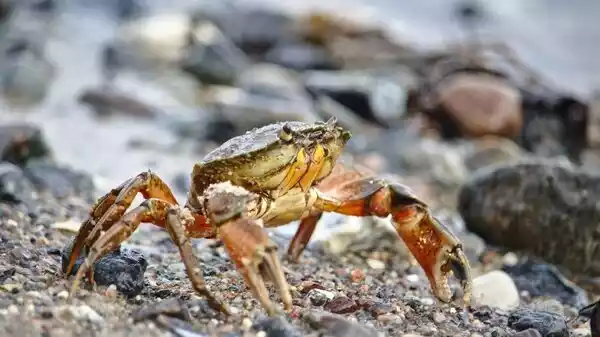
You can find them scuttling along the seashore, hiding under rocks, or burrowing in mud. Lobsters, on the other hand, mostly stick to the ocean floor. They prefer rocky, sandy, or muddy bottoms where they can hide from predators.
You’ll often find lobsters in colder waters of both the Atlantic and Pacific Oceans, lurking in crevices or burrows. While crabs can be spotted in many coastal regions globally, lobsters are more commonly found in the northern Atlantic Ocean, notably in areas like the coast of Maine and the maritime regions of Canada.
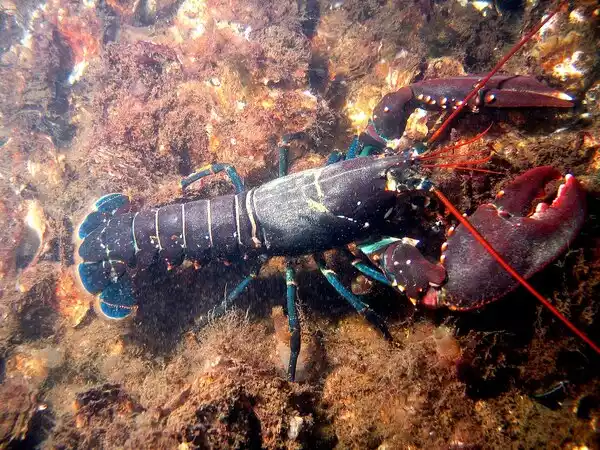
Both these crustaceans have adapted well to their respective habitats, contributing significantly to the marine ecosystem.
Behavior and Lifestyle
Crabs and lobsters have distinct behaviors and lifestyles that are fascinating. Crabs are known for their sideways walk, which is unique in the animal kingdom. They’re generally scavengers, eating anything they can find, which helps keep the ocean floor clean. Some crab species are also known to be quite social, while others prefer a solitary life. On the other hand, lobsters lead a more secretive lifestyle.
They are nocturnal, spending most of the day hiding in burrows or crevices, and come out at night to hunt. Lobsters primarily eat fish, mollusks, and other small sea creatures. Both crabs and lobsters play a ‘molt’ game, where they shed their exoskeleton as they grow, a process that leaves them vulnerable until their new shell hardens.
This molting process is crucial for their growth but it’s a risky time for them, as they become easy targets for predators. Despite these challenges, crabs and lobsters have thrived in their marine environments, each adapting in their unique ways.
Taxonomy and Classification
The taxonomy and classification of crabs and lobsters are as follows:
Crabs
- Kingdom: Animalia
- Phylum: Arthropoda
- Subphylum: Crustacea
- Class: Malacostraca
- Order: Decapoda
- Infraorder: Brachyura
Lobsters
- Kingdom: Animalia
- Phylum: Arthropoda
- Subphylum: Crustacea
- Class: Malacostraca
- Order: Decapoda
- Suborders: Pleocyemata (for true lobsters) and Dendrobranchiata (for spiny lobsters)
Reproduction and Life Cycle
Crabs and lobsters have fascinating yet distinct reproductive and life cycles. Crabs often engage in a unique courtship ritual where the male carries and protects the female until she molts, at which point they mate.
The female crab carries her fertilized eggs in a mass underneath her abdomen until they hatch. Lobster reproduction is somewhat different; after a complex mating ritual, the female lobster carries her eggs on her swimmerets under her tail until they hatch, with the eggs sometimes numbering in the thousands.
Both crabs and lobsters go through a process called molting, where they shed their old exoskeleton to grow a new, larger one. This process is critical for their growth and can occur numerous times throughout their life. The life span of crabs and lobsters varies greatly among species, with some crabs living a few years and some lobsters living over 50 years, showcasing the diversity in their life cycles.
Nutritional Value and Health Benefits
Crab and lobster offer nutritional value and health benefits. They are excellent sources of lean protein, low in saturated fats, and provide essential vitamins and minerals like vitamin B12, zinc, and selenium. Both crustaceans contain omega-3 fatty acids, which can promote heart health and reduce inflammation.
Additionally, they are relatively low in calories, making them a good choice for those watching their weight. However, it’s important to be mindful of preparation methods; deep-frying or excessive butter and cream in recipes can increase calorie and fat content. When prepared healthily, crab and lobster can be part of a balanced diet, offering a tasty way to enjoy protein and essential nutrients.
Conclusion
Both crabs and lobsters are fascinating crustaceans, with distinct characteristics in terms of their physical characteristics to their culinary use.
While crabs tend to be smaller and have soft, sweet meat that is ideal for many recipes, lobsters are more substantial and are prized because of their supple, soft meat, and are considered to be an exceptional ingredient in many different cuisines. Knowing these differences will enhance both the enjoyment of food while also enhancing appreciation for the incredible marine creatures.

